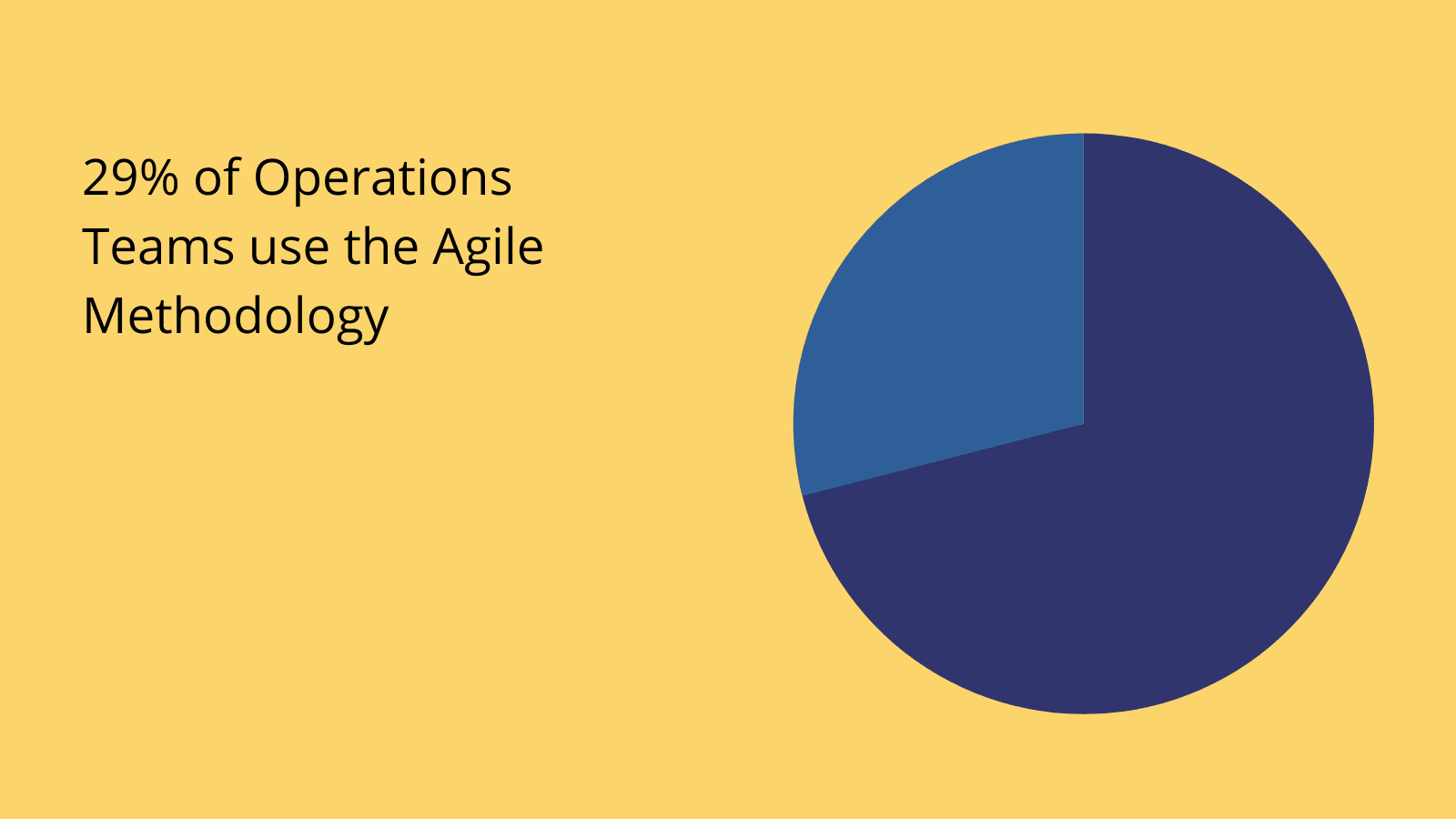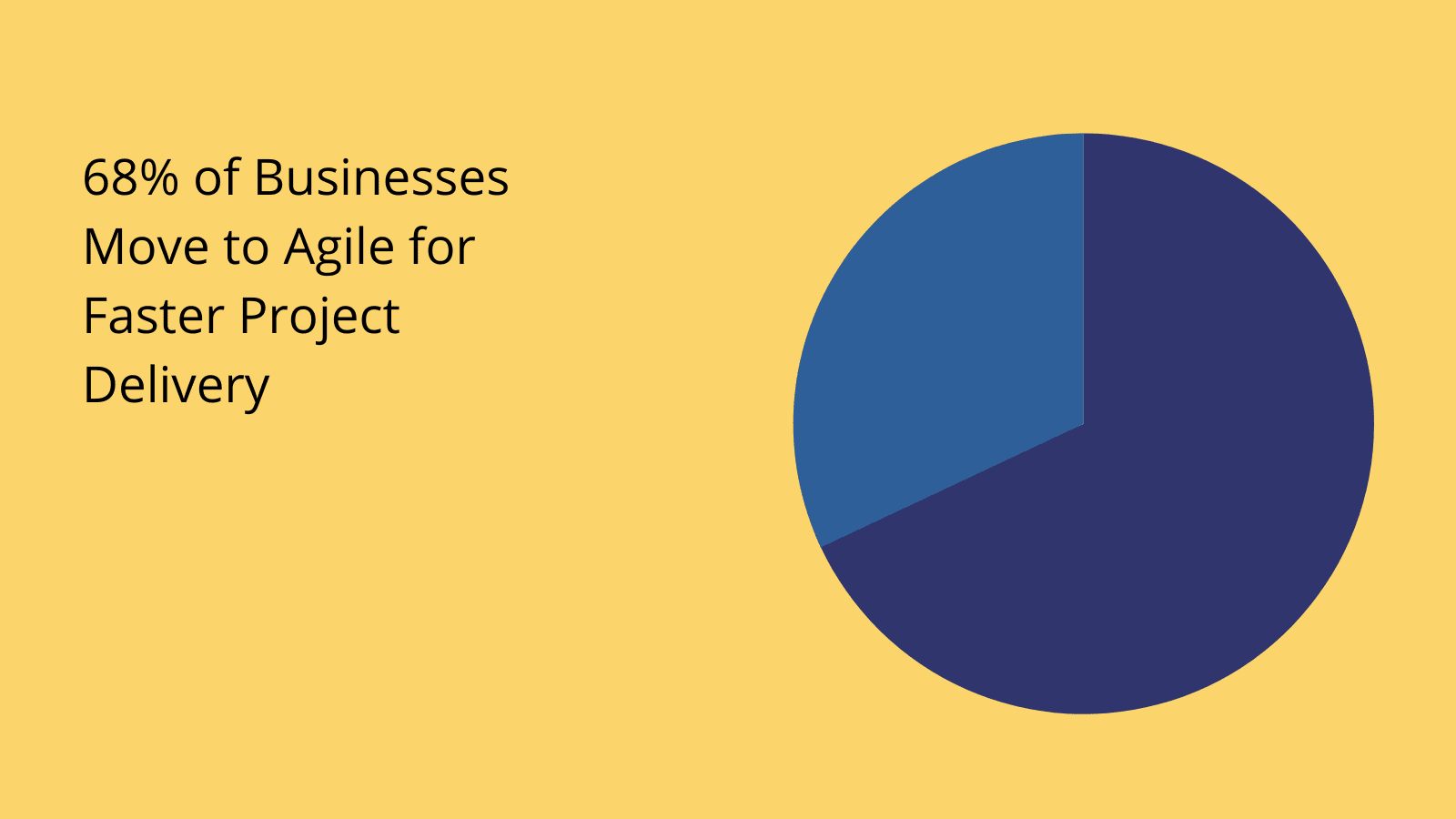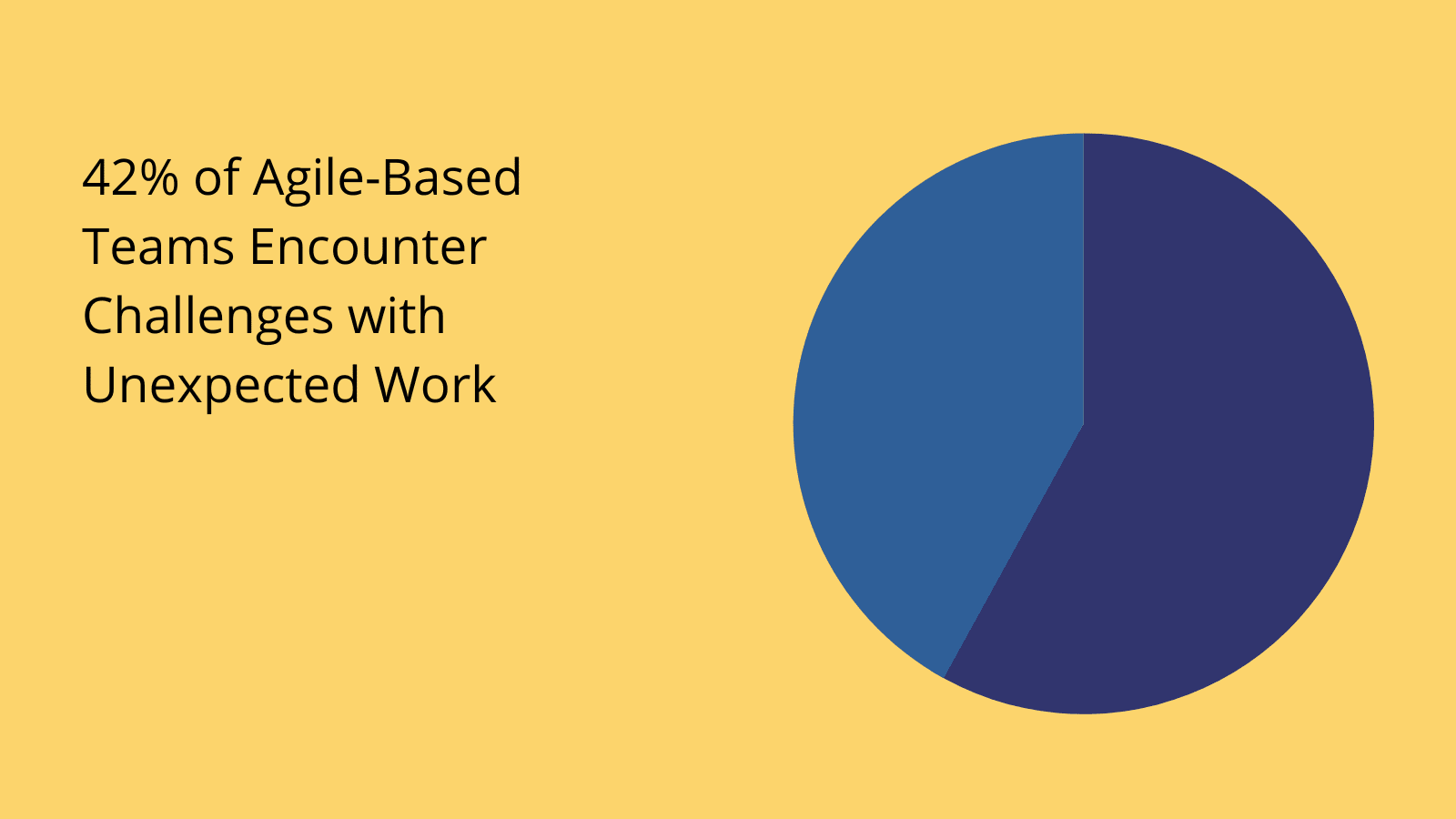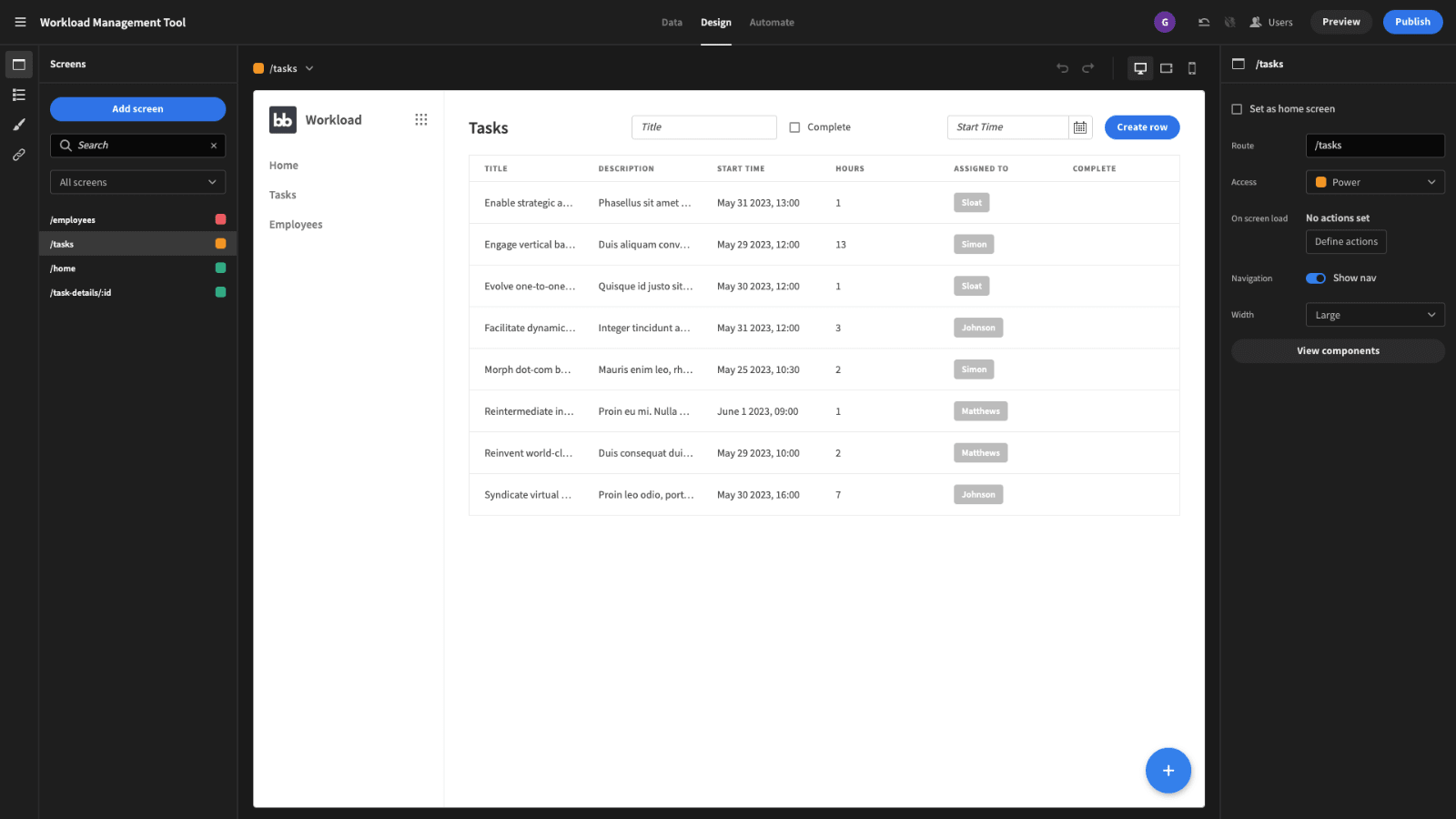How to Implement Agile in Operations
Understanding how to implement Agile in operations teams is one of the most valuable skills for any modern organization. Once upon a time, Agile was more or less exclusively a software development methodology.
Nowadays, it’s quickly becoming the norm across all kinds of teams and departments.
In particular, IT and operations teams are increasingly turning to Agile to take advantage of quicker turnaround times, lower overheads, and enhanced ability to meet real-world business challenges - among plenty of other benefits.
Today, we’re checking out everything you need to know about implementing Agile in your Ops team.
We’re also going to explore some of the questions you’ll need to answer to figure out if AgileOps is right for you - along with some of the challenges we’ll need to overcome, and ultimately what we’ll achieve.
But first, let’s go over the basics.
What is AgileOps?
AgileOps is a model for digitally-enabled businesses that need to respond quickly to change. As the name suggests, it builds on the Agile software development methodology - as well as DevOps - applying the core principles of these to wider internal operations.
We’ll break this down further in a second.
There are a few key goals of AgileOps that are worth getting to grips with first.
One is achieving better alignment with software development teams that base their processes around Agile.
Another is - as you might have guessed from the name - Agile is highly focused on maximizing your responsiveness to change.
Finally, Agile aims to prioritize human beings over systems or rigid requirements. Of course, to fully grasp how this works, we’ll have to take a step back and think about Agile more generally.

(TrustRadius )
What is Agile?
Agile emerged as an approach to software development because of a recognition that traditional project management methodologies aren’t really suitable for creating digital solutions.
Broadly, a traditional waterfall-based methodology would mean gathering all of your requirements up-front, then building, testing, and releasing your entire solution - in that strict order.
This is fine if we’re building say a bridge - since nothing is going to change much in terms of our requirements or the tools and technology we’re planning to use. We can’t really say this about software or other IT projects.
Recognizing that things move much faster in the digital space, Agile takes what’s described as an iterative approach.
So, rather than gathering requirements for the entire project up-front, we divide it into more manual iterations.
In each iteration, we zero in on a specific feature, functionality, or some other subsection of the wider solution. We gather requirements, build and test the solution, and gather feedback from users before we move on to the next iteration.
This enables us to better account for changing requirements - whether these stem from changing technology, evolving needs, or simply things that we didn’t consider initially and then learned from user feedback.
Check out our guide to Agile digital transformation to learn more about how this works in a software-focused context.
The Agile operations cycle
So, that’s Agile as most people would understand it. The next step is understanding how we can apply this thinking to our Ops outside of software development.
Obviously, operations are a little bit more nebulous than software development. We’re simply dealing with a wider variety of tasks here - so it’s a bit less obvious how a repeatable iterative framework ought to look.
Taking that into account, here are the six key stages of the AgileOps cycle.
1. Meet
First of all, we want to get our stakeholders together to gain a solid understanding of the problem we’re trying to solve. Compared to more traditional operations processes, this should be a relatively democratic process.
It’s not the case that we want to dictate to anyone involved how are processes are going to look going forward.
Rather, AgileOps is based on the presupposition that stakeholders at all levels have unique perspectives to bring to projects.
The goal of this initial stage of the cycle is twofold:
- We want to gather as much information as we can about the problem at hand.
- We want to create a consensus about the solution among all of our stakeholders.
2. Plan
Next, we can move on to planning out the work for the current iteration. Typically, iterations take place over fixed intervals - say - four weeks. So, from our shared understanding of the solution to the problem at hand, we need to decide what work to prioritize.
We can then define requirements for anything that’s going to take place during the iteration.
This includes all of the functional aspects of our project, along with our success criteria, timelines, dependencies, and how we’re delegating tasks.
By the end of the planning stage, we’ll have a much more granular picture of what’s happening in the current iteration, including its internal goals.
3. Design
The design phase makes slightly more intuitive sense in the context of more technical projects, but we can apply it in principle to all kinds of projects. Remember - AgileOps takes its cues from software development, where the design stage is common parlance.
Wireframing or systems design are better analogies. In other words, we’re designing our solution or project in the abstract. This can include all of the logic and policies that govern it, as well as the structure of any other project elements.
Or, of course, in the case of more technical ops projects, it can also include literal design and wireframing work.
With the design stage completed, we’re ready for implementation.
4. Develop
The develop phase is when we put our plan into practice. Obviously, despite taking its name from software development, how this actually looks can vary a lot more in an operations context.
For sole process-based projects, we’re essentially just rolling out our new solution.
With digital projects or other more technically-involved interventions, we’ll still need to build out any specific services, automations, internal tools, interfaces, or other solutions that we need to meet our requirements.
In any case, by the end of this stage, the work we planned for the current iteration should be ready for testing.
5. Test
Testing means making sure that everything works in the real world as we’d expect it to. It’s obvious how this works with technical solutions, but it’s equally important to get your head around how to apply the same principle to other ops projects.
We’re specifically worried about functional testing for now. We’ll come on to how we’re performing in terms of our underlying goals in a second.
So for example, do processes lead to the outcomes that we thought they would? Do automation tools and other digital solutions actually function correctly?
Once we’ve validated that everything works properly, we can roll out our new solutions or processes.
6. Evaluate
Finally, we want to evaluate the impact of the work we carried out during the iteration.
Remember, we defined our goals at the outset of our iteration. Evaluation means analyzing where we’ve been successful and where we’ve fallen short - with a view to figuring out when and if we need to change course.
On top of this, one of the core points of knowing how to implement Agile in operations is improving our ability to respond to changing requirements.
As such, we also want to reflect on any roadblocks we might have encountered - as well as how our expectations and requirements changed during the iteration.
Benefits of implementing agile in operations
So - why bother? After all, entirely changing the structure of our ops is a big undertaking, to say the least.
It only makes sense that the benefits must be pretty major to make this worthwhile. Indeed, businesses implement AgileOps for a fairly wide variety of different reasons.
These include:
- Cost-effectiveness - Agile can be an effective way to reduce project costs.
- Delivery times - We can often turn projects around faster.
- Business value - For most internal tools, we’re in a better position to solve real-world business problems with AgileOps.
- Security - Agile empowers us to spot threats and vulnerabilities earlier in the project.
- Compatibility - We can achieve higher levels of interoperability and integration with other processes and services.
- Continuous improvement - AgileOps puts a focus on finding ways to improve our operations on a continuous basis.
- Communications - By involving our colleagues on a regular basis, we greatly improve communications within projects.
- Responsiveness - We are in a stronger position to respond to change or new threats.
- Insights and collaboration - We draw on perspectives from a greater number of stakeholders across teams.
Besides these core benefits, there are also countless highly contextual and process-specific reasons that might lead you towards AgileOps.

(Apptio )
Challenges
However, understanding how to implement Agile in operations also means knowing where we’re likely to encounter challenges, roadblocks, or other issues.
In fact, there are plenty of situations, projects, and use cases where Agile isn’t the appropriate approach.
Here’s what you need to keep in mind:
- For certain projects, we need tightly defined, front-loaded requirements, so Agile isn’t suitable.
- The flip side of responsiveness to change is that scope creep can be more likely.
- We may need modifications to the Agile methodology to avoid getting bogged down in minor disagreements between stakeholders - ultimately, we still need clear responsibility for determining what actions to take based on feedback.
- Agile isn’t inevitably going to be the most cost-effective option - and we’ll need to account for the extra labor costs associated with an iterative approach.
- Operations methodologies are often very sticky within organizations - so we might find it difficult to achieve buy-in for a shift to Agile.
- We might need additional resources for new tools and technologies - more on this in a second.
- To fully implement Agile in operations, we might even need to rethink our internal roles and responsibilities.
While none of these issues are necessarily insurmountable, they are the kinds of considerations we’ll need to keep in mind when deciding if implementing Agile in our operations is a good idea.

(TrustRadius )
Tools for AgileOps
As we said a second ago, knowing how to implement Agile for operations also means thinking about the kinds of additional tools we might need to resource.
Now, Agile is a methodology. That is, it’s an approach to carrying out tasks. So, in theory, it should be relatively technology-agnostic - and as such we don’t strictly need any new tools to implement it.
But there are a couple of common solution classes that organizations use to implement Agile because it makes their lives easier.
A lot of teams rely on Agile-specific project management tools. Agile projects have a particular structure, and when we have a way of visualizing the flow of tasks, things will often go a lot smoother.
In particular, Agile is synonymous with Kanban-style project management tools.
Besides this, we can think a bit more outside the box about the kinds of tools that will support our efforts within an AgileOps environment.
So, consider that an iterative approach means that we’re much more likely to produce smaller services, solutions, policies, or even software modules at pace.
In the case of technical solutions, in particular, we need the right tool stack to support this. These days, a couple of key types of platforms come into play.
One is hosting as a service. Agile prioritizes adaptability in the face of change, so many businesses find that the flexibility of serverless or as-used computing is a more suitable solution than on-premises hosting.
The other is low-code development - which is used both to expedite builds by technical teams and to empower non-developers to create solutions for themselves.
We’ll see what Budibase brings to the table for AgileOps a little bit later.
How to implement Agile in operations in 4 steps
Before we wrap up, it’s worth providing a roadmap for how to implement Agile in operations teams. Now, exactly what this looks like will vary from company to company. For instance - if you have 10 staff vs if you have 10,000.
With that in mind, here are the four steps you can follow to successfully implement AgileOps.
1. Staff training
First, we need to get our team ready for the move to Agile - both in terms of the theory behind the methodology and the implications for your real-world processes.
Specifically, all members of our team should grasp:
- What Agile is.
- What we’re moving to Agile.
- What this means for their role.
- All of our new processes.
- Anything that’s expected of colleagues.
We’ll also need to factor in any more specific training issues - like working with specific tools that you’re providing as part of your Agile efforts.
2. Emphasize flexibility and adaptability
Next, we need to focus on how we can prioritize responsiveness to change. This is particularly challenging when we’re moving from waterfall-based operations, as colleagues can often find it difficult to reframe their priorities.
One important element of this is adhering to the principle of people over processes.
That is, every decision we make within any process should be centered around providing value to real-world colleagues and customers - rather than rigidly sticking to procedures that could well be totally dated.
3. Foster collaboration
We also want to think about the practical steps that we can take to foster a culture of collaboration - particularly across different business verticals, disciplines, and departments.
This serves the dual purpose of helping us to identify potential problems within projects before they occur - as well as taking account of a broader range of perspectives and input from different stakeholders.
We can attack this problem from both technical and policy levels. That is, we can use organization techniques, like regular feedback sessions - as well as specific tools to support collaboration across teams.
4. Roll out new tools and processes
Finally, we need to actually roll out our Agile operations processes, along with any tools we’re using to support these. With the right training and governance in place, the former should be relatively straightforward.
With the technical side of things, there are a few additional considerations that we’ll need to keep on top of.
Specifically, we need to provide resources for support, maintenance, lifecycle management, and ongoing training for any tools that we provide as part of our shift to AgilesOps - along with any new hosting or infrastructure requirements that come along with this.
To learn more, check out our ultimate guide to internal processes .

Budibase for IT ops
At Budibase, our mission is to help teams turn data into action. Businesses all around the world choose our open-source, low-code platform to create custom web apps for all sorts of use cases.
Here’s why.
Our open-source, low-code platform
With responsive design tools, extensive external data support, and unrivaled extensibility, Budibase is the smart solution for creating professional applications, with minimal custom coding skills.
Even better, our free tier is probably the most generous in the low-code space.
Check out our features overview to learn more.
Connect your data
Budibase leads the pack for external data connectivity. Our platform offers dedicated connectors for SQL, Postgres, S3, Oracle, Airtable, Mongo, Couch, Google Sheets, REST API, and more.
We also have our own built-in database, with extensive support for a whole range of different data types.
Optional self-hosting
With Budibase, you’re in control of how and where you host your solutions. Deploy to your own infrastructure with Kubernetes, Docker, Digital Ocean, N8N, Portainer, and more. Or, use Budibase Cloud and let us handle everything.
Check out our pricing page to learn more about both options.
Intuitive automations
Budibase makes building automated operations processes a breeze. Create custom rules using our flow-based editor and built-in triggers and actions.
You can even use external events in your automations vis REST, Zapier, Webhooks, and more.
Role-based access control
Marrying security and usability has never been easier. Use Budibase’s built-in RBAC to quickly assign users to predefined roles and grant permissions at the level of screens, data sources, queries, automations, or individual components.
We also offer free SSO with OAauth, OpenID, and more.
Custom plug-ins
Budibase is miles ahead for customization and extensibility. Build your own data sources and components and ship them across your low-code tools with our dedicated CLI. Or, add ready-built plug-ins from our community as easily as copying and pasting a URL.
Check out our plug-ins docs to learn more.
50+ free app templates
Businesses around the world choose Budibase for all sorts of application projects. To show you, we’ve created more than fifty free, customizable, and ready-to-deploy app templates .
To start building custom solutions the fast, easy way, sign up to Budibase today for free.